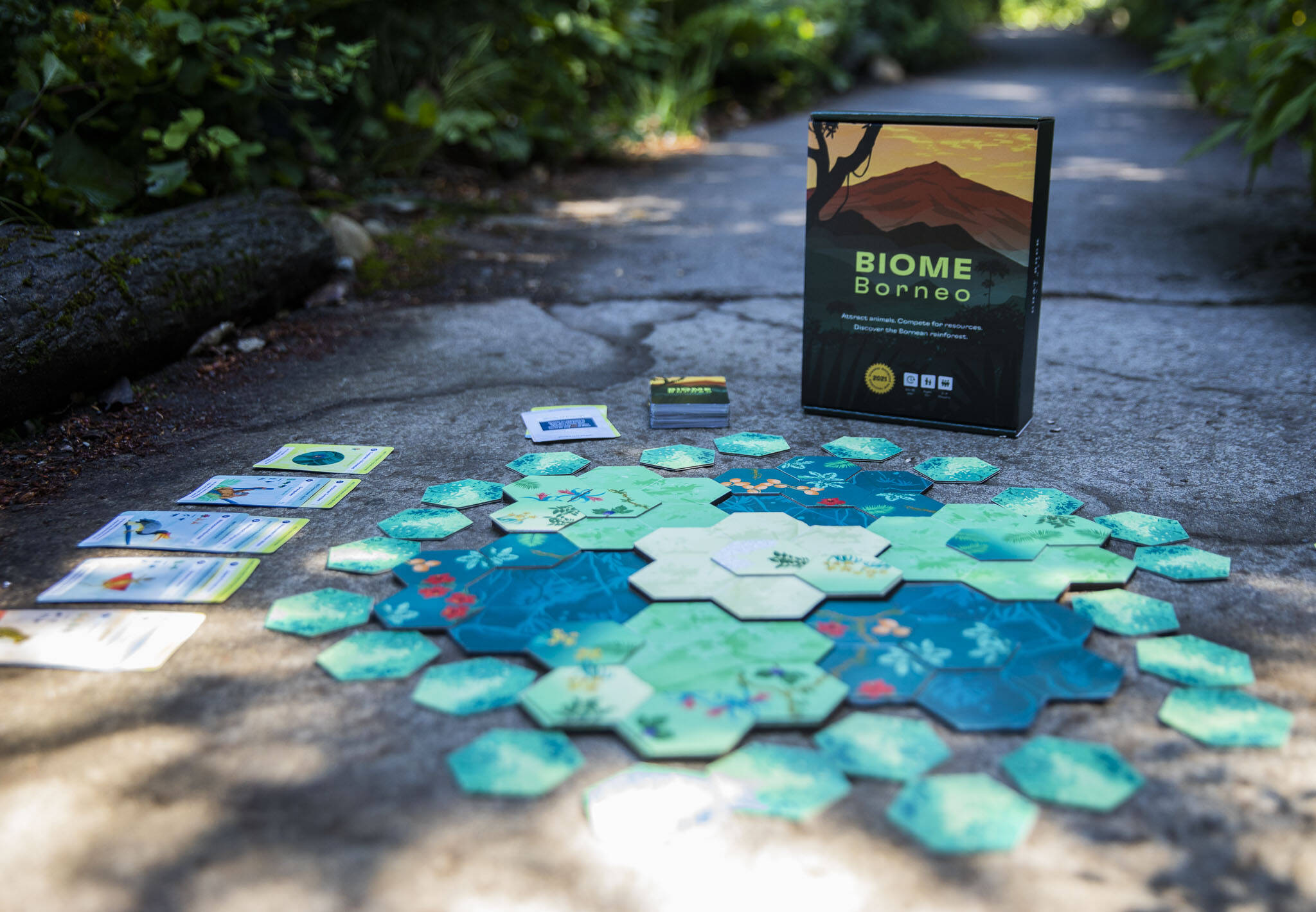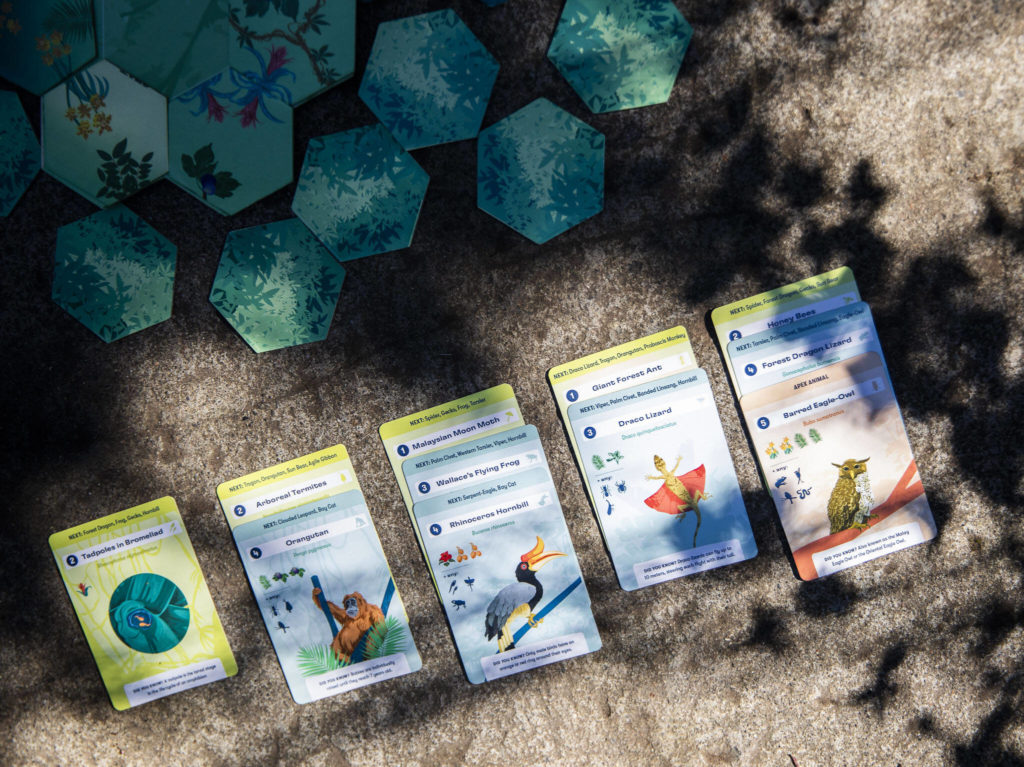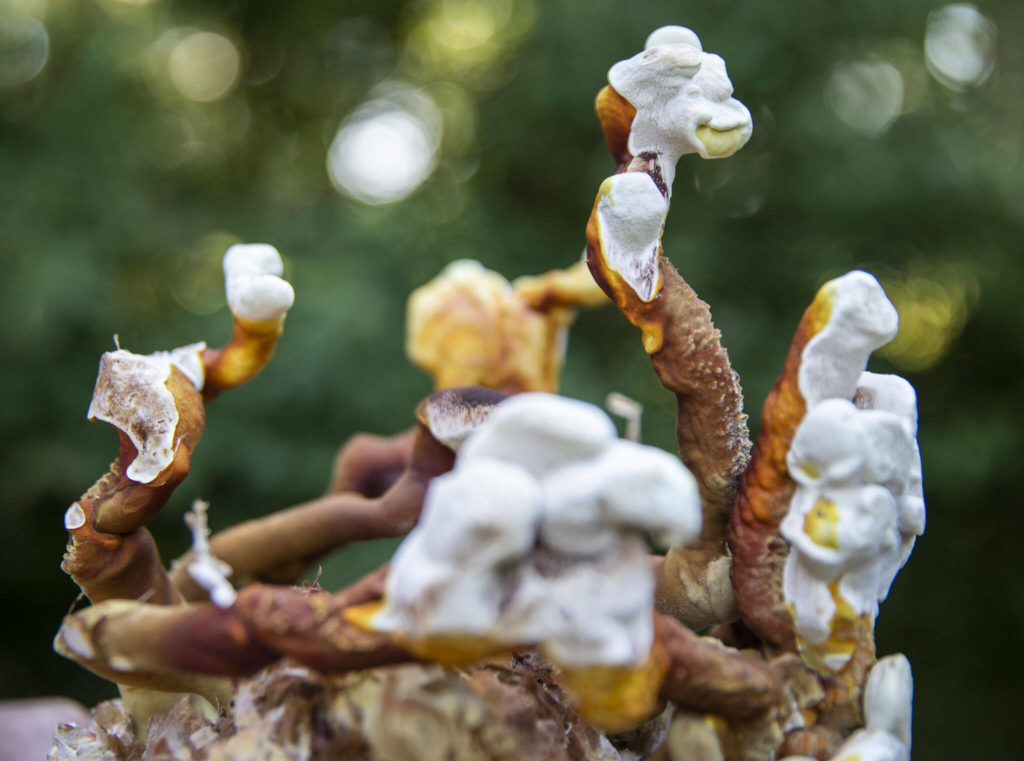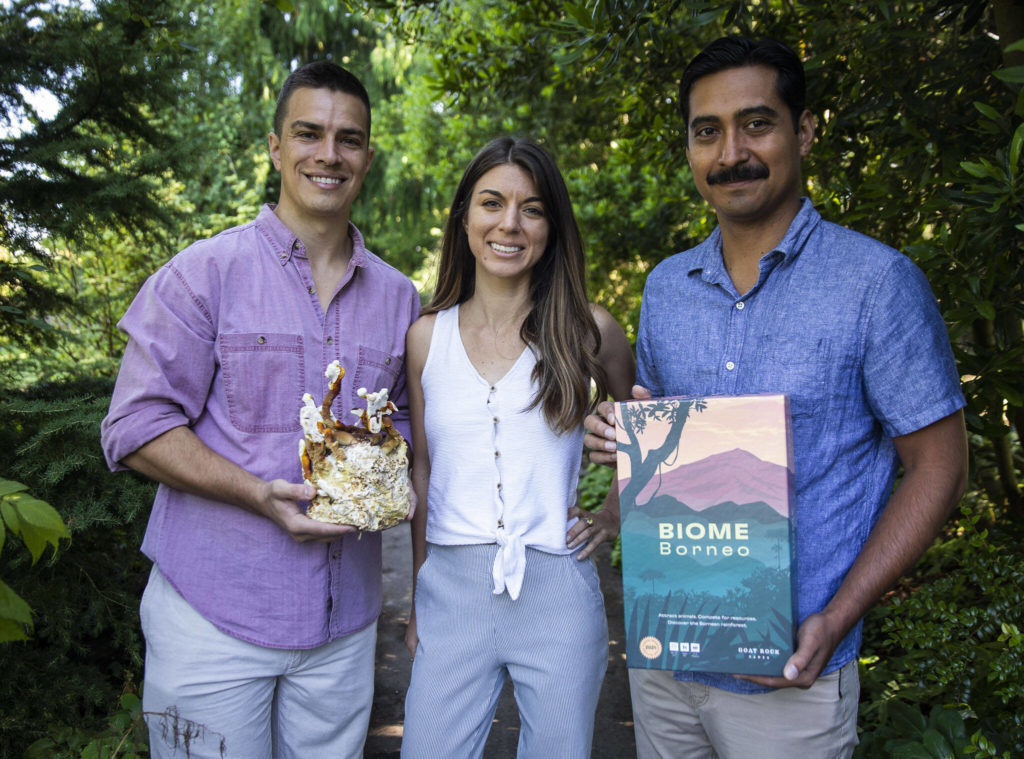STANWOOD — Justin Hylarides has a house full of mushrooms and an idea for a board game.
His Stanwood-based team of three plans to launch the first version of “Biome: Borneo” next month. The game features flora and fauna from one of the most biodiverse places on Earth. The island of Borneo’s tropical rainforests feature over 15,000 plant species, 6,000 of which aren’t found anywhere else on the planet. A single tree can host a thousand insect species.
The trio eventually wants to use recycled fishing nets and reishi mushrooms to make the game.
“I’ve got like 200 mushrooms just sitting in my place right now,” he said.
The game features a 3-D, rearrangeable board representing the understory, canopy and emergent layer of the rainforest. Play plant tiles in the appropriate zones to build an ecosystem hospitable to your animal cards. Just like the rainforest, everything is interconnected.
For board game aficionados, compare “Biome: Borneo” to the award-winning game “Wingspan,” where you’re the steward of an ecosystem trying to attract birds to your preserve. This local game, however, features more diverse critters and hones in on a real place. The isle is the largest in Asia and has one of the oldest rainforests in the world, at about 130 million years old.
Players learn about the Malaysian moon moth, forest dragon lizard and lantern bug. Justin Hylarides and his co-creators — sister Ciara Hylarides and friend David Pulido — eventually want to travel to Borneo.
They’d love to see a tarsier, a tiny nocturnal primate with massive eyeballs and a head that can swivel like an owl’s.
“It doesn’t look real,” Pulido said. “It doesn’t look like it belongs on our planet.”
The team had no experience in game design. But they like playing the Spaghetti Western card game “Bang!” and “Memoir 44,” a historical World War II strategy game.
When the pandemic trapped them inside together, they quickly burned through the six or so board games Pulido had on the shelf. So they thought about making their own. At first, the idea was to make a 2020-themed game. Something where you hoard toilet paper.
But the year got “really dark really quickly,” Ciara Hylarides said.
“We quickly realized, no, this wouldn’t be a good game,” Pulido said. “Nobody wants to play this.”
Other game ideas included a race to win over the country in a presidential election. There was one about honeybees and another with toucans. They mulled over a nature game based in the Amazon rainforest before they landed on Borneo.
The island’s rainforest has been leveled even faster than the Amazon’s.
“I was like, how did I not know about this place?” Pulido said. “This is a really important place on the planet, and nobody in the Western world knows about it — at least nobody in my circles.”
The goal is to educate players about Borneo’s biodiversity.
They hope to work with Net Your Problem, a company that turns old fishing nets into usable plastic.
And scientists at Western Washington University are figuring out how reishi mushrooms could be transformed into game pieces. Normally those pieces are chipboard, a material made of compressed wood shavings.
“There’s a lot of green-washing happening right now in the world,” Ciara said. “But the businesses and organizations that are able to go full circle — from idea to product to manufacturing, locally? That’s the best way to be sustainable.”
Some companies already use mushrooms to package things like wine bottles, growing mycelium inside molds to cradle glass bottles for shipping.
But the road to make hard game pieces is a little different. Luckily, Justin Hylarides said, the team found a professor who’s “absolutely bonkers about doing this project.”
Nicole Larson teaches undergrads about composites engineering. Normally, that means using “aerospace-grade materials,” she said. Mushrooms? They’re a bit out of her wheelhouse.
“It’s a complete first,” Larson said. “I’ve never considered working with mushrooms, never tried to grow them, never tried to do anything with them.”
Her team of about six undergrads is heating and pressing the fungi into sheets, laminating them with a special bio-epoxy. A few of her students plan to make the project their senior capstone. The above-ground bits of these mushrooms can be turned into teas and tinctures. But Larson’s team is using the mycelium — the fungal threads that spread out underground.
“So it’s really a waste product that they get rid of,” Larson said. “I do think it could be a viable alternative to a lot of paper products, where you’re using a lot of chemicals and trees.”
At first, Larson wanted nothing to do with the mushroom-growing process. But she caved when she learned how important the cultivation stage is. Her supply closet is now full of fungi.
“I get made fun of. People are like, ‘It’s the mushroom lady!’” Larson said. “I tell them, ‘No, it’s not magic mushrooms, we’re not consuming them.’”
She hasn’t gotten a chance to play “Biome: Borneo” yet. She had a prototype, but her students took her copy.
“I’m like, ‘I want to play, too!’” Larson said.
Want to play?
Keep an eye on biome3dgame.com to catch when the game goes live with its Kickstarter.
Find updates on Facebook and Instagram @Biomegame.
Claudia Yaw: 425-339-3449; claudia.yaw@heraldnet.com; Twitter: @yawclaudia.
Talk to us
> Give us your news tips.
> Send us a letter to the editor.
> More Herald contact information.




























